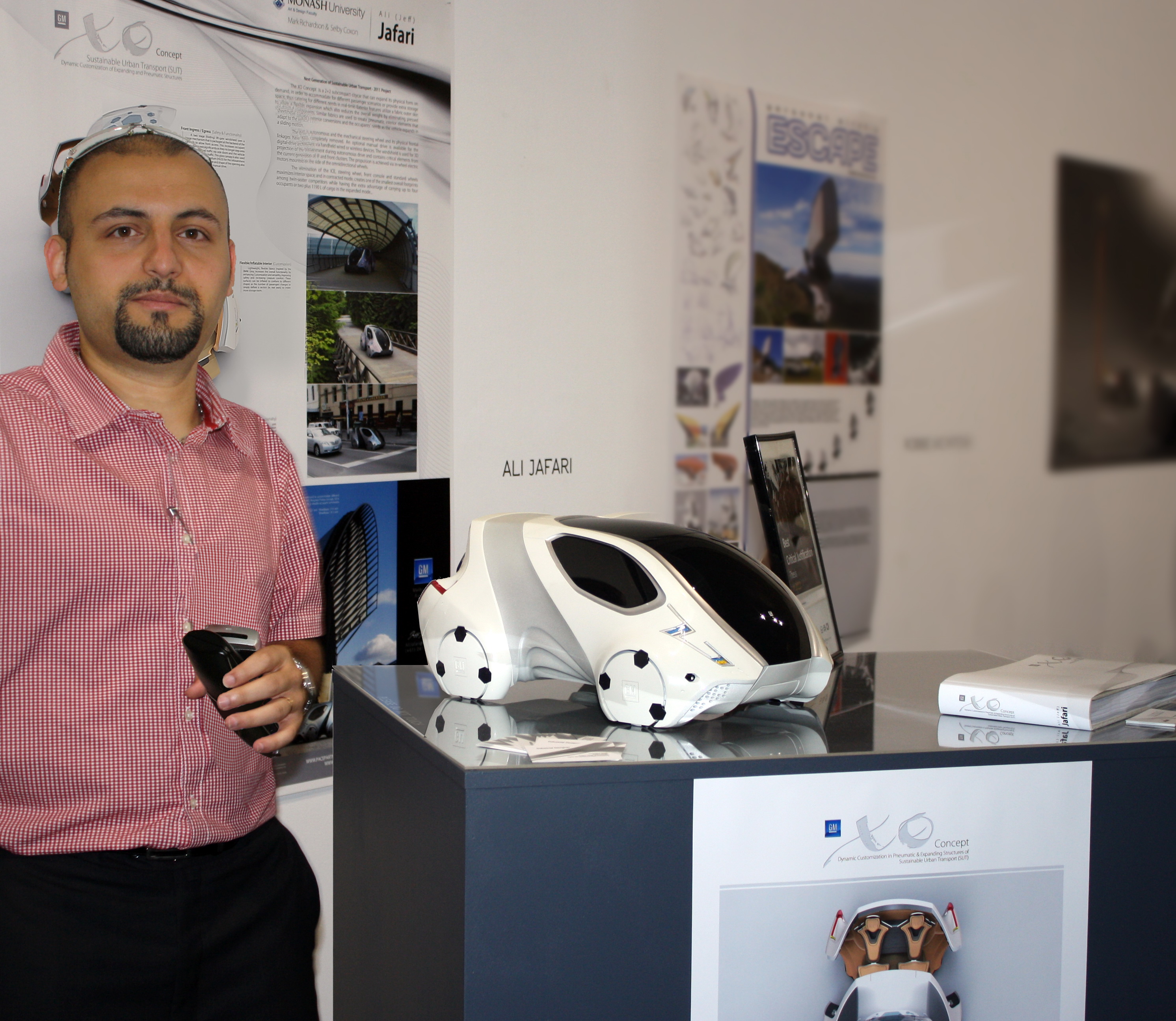In Melbourne, a shape-shifting car

MELBOURNE – Industrial designer Ali Jafari’s GM (General Motors) XO is an autonomous subcompact car that promises to take you from A to B without injury or negative environmental impact. In marketing speak, it's a shape-shifting car made for city living.
The driverless car’s most distinctive feature is its ability to expand to take extra passengers or cargo. Plus, it can take the hassle out of parking, compressing to fit into small spaces.
The top speed is limited electronically to 100kph with an overall battery range of 80-100km (depending on driving style, road conditions and traffic conditions). It carries a total estimated dry weight of 500-600kg depending on the configuration.
Jafari, a Melbourne designer, is one of many designers to respond to increasing interest in autonomous cars from industry and government. Only last month, the U.S. State of California passed bills for autonomous vehicles.
In Australia, it only takes a brief look at T.V. commercials to see that the popularity of autonomous features is growing. Brands such as Ford, are rushing to include features like auto-park and emergency-stop in their line-up, even in entry-level models.
Of course, BMW and Volvo have been miles ahead in terms of presenting future concepts in everyday cars, with many of their vehicles already featuring semi-autonomous features.
So what makes Jafari's GM XO a concept worth considering?

Jafari, a contender for the 2012 James Dyson Award, makes no claim to creating new parts or technologies.
He describes the XO as “the gamut of ideas come together in harmony in a single design.”
In the GM XO, Jafari has taken existing autonomous concepts to the next level -- in terms of integration, seamless functionality and blue-sky thinking.
"It is built around the autonomous feature, not the other way around. When you have a car that can reliably and consistently drive itself, why would you need to use features that were designed and introduced 100 years ago for a completely different architecture?” Ali Jafari says.
Some of these ‘outdated’ features include fixed steering wheel; a seating configuration that discourage face-to-face social interaction; and dangerous side doors that allow passengers to step into oncoming traffic.
“The GM XO is the result of re-examining the conventions and redesigning around the new criteria with the firm belief in the underlying concept, not on a half-half approach,” he says.
The design features an intuitive system comprising of various sensors and cameras distributed around the vehicle that constantly feed information to an onboard processor.
“It intelligently guesstimates where they will be in a given time or what will be the near future scenario based on predefined algorithms and the stream of data from its 360-degree sensors,” Jafari says.
The GM XO is also fully aware of its surrounding environment. It is equipped with wireless connectivity to other road users (cars or pedestrians) and can communicate with other elements to form a smart traffic flow that moves in a coordinated pattern to save fuel.
By default, the drive is completely autonomous, with manual control capabilities for certain scenarios, and the mechanical steering wheel and its physical frontal linkages completely removed.
Jafari explains that this will have a great impact on consumption patterns by eliminating the inefficiency of everyday driving by using the right amount of energy in any condition.
The new drive structure also eliminates the human error factor from driving dynamics, so no more fatalities caused by drowsiness or driving under the influence of alcohol. That alone could have a huge impact on costs associated with accidents and life dramas caused by injury or loss of life.
Jafari also anticipates that his car will be cheaper to manufacture. The design has less complicated manufactured structures and therefore makes parts such as the steering column, mechanical linkages, instrument panel (IP) and other conventional car parts, redundant. At this stage, a cost comparison has not been carried out.
The GM XO is also smart enough to enhance its capabilities in light of external elements such as access to urban databases with real-time update of businesses, public services, weather, traffic, local laws and road works.
But environmentally speaking, the GM XO's claim to a zero carbon footprint is dependent on electricity being produced from renewable resources.
The GM XO concept was designed for the General Motors' 2010-11 PACE global conference in Vancouver bringing home multiple awards.
The conceptualization of the exterior and interior started at around the end of 2010 and it formed Jafari’s final year design project and thesis. In July the design won the 2012 Victorian Automobile Chambers of Commerce (VACC) competition.
The target for a functional prototype is set for 2015. However, some of the future-forward features examined within this study are trickling down to consumer markets as popularity for autonomous features grow.
Photos: Ali Jafari.
This post was originally published on Smartplanet.com

